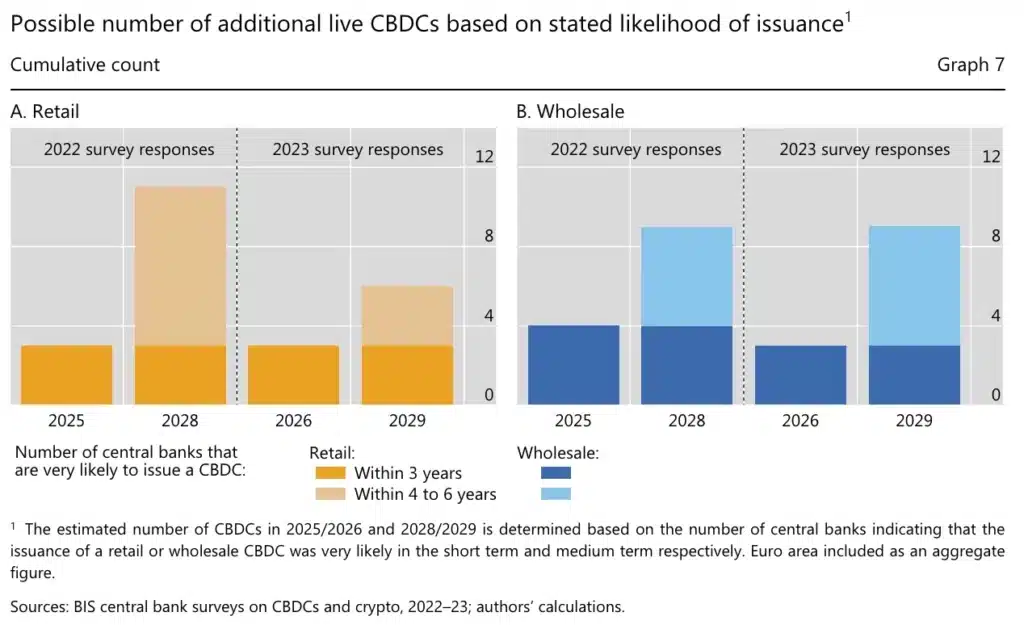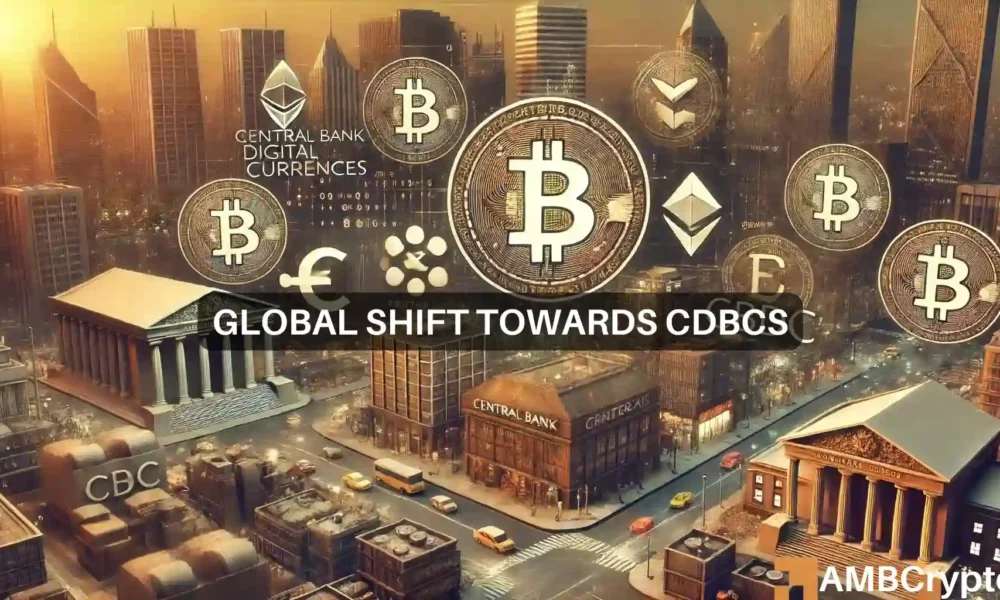- US lawmakers want to ban CBDCs, but 94% of central banks aren’t so sure
- Stablecoins have been introduced cautiously due to regulatory concerns
Despite the U.S. House of Representatives passing a bill to ban the Federal Reserve from issuing a central bank digital currency (CBDC), interest in CBDCs continues to grow worldwide.
Survey findings
According to a recent questionnaire by the Bank for International Settlements (BIS), 94% of central banks are now exploring CBDCs, up from 90% in 2021.
The survey, which included 86 banks, also found that these banks are more likely to implement wholesale CBDCs than retail CBDCs in the next six years.


Source: bis.org
For context, wholesale CBDCs facilitate transactions between banks and financial institutions, while retail CBDCs are for public use, such as buying coffee.
Providing further insights into this, BIS researchers noted,
“The research shows that central banks are moving at their own pace, taking different approaches and considering different design features.”
They added:
“For retail CBDCs, more than half of central banks are considering holding limits, interoperability, offline options and zero fees.”
Here it is worth noting that many in the financial sector fear that a CBDC could increase government surveillance and control, stifle innovation and restrict freedoms. Therefore, the latest report comes as a huge relief to market participants concerned about these implications.
Popular all over the world?
Interestingly, countries around the world have been considering digital currencies for years, with China being an early pioneer. Nigeria and the Bahamas were among the first to issue their own CBDCs as well.
On the contrary, former US President Donald Trump has strongly opposed the idea. In a campaign speech in New Hampshire, he vowed to prevent the creation of a U.S. CBDC if re-elected, calling it a “dangerous threat to freedom.” He said,
“As your president, I will never allow the creation of a central bank digital currency. Such a currency would give our federal government absolute control over your money.”
Earlier this week he also claimed:


Source: Donald J. Trump/Truth
The adoption of stablecoins is lagging behind
It is also important to note that despite the rapid exploration of CBDCs by central banks in advanced economies, adoption of stablecoins remains relatively modest.
In May 2024, the total market capitalization of cryptocurrencies was $2.7 trillion. Stablecoins made up only a small portion, representing just 6% of the cumulative cryptocurrency market capitalization, which is approximately $161 billion.
This disparity means that while major cryptocurrencies are in a strong position, stablecoins have been cautiously adopted.
The report sheds light on this and concludes:
“In crypto, the research indicates that stablecoins are rarely used for payments outside the crypto ecosystem to date. In addition, approximately two out of three responding jurisdictions have or are working on a framework for regulating stablecoins and other crypto assets.”
So, as things unfold, it would be interesting to see how discussions about digital currencies shape global economic policy and financial innovations.

